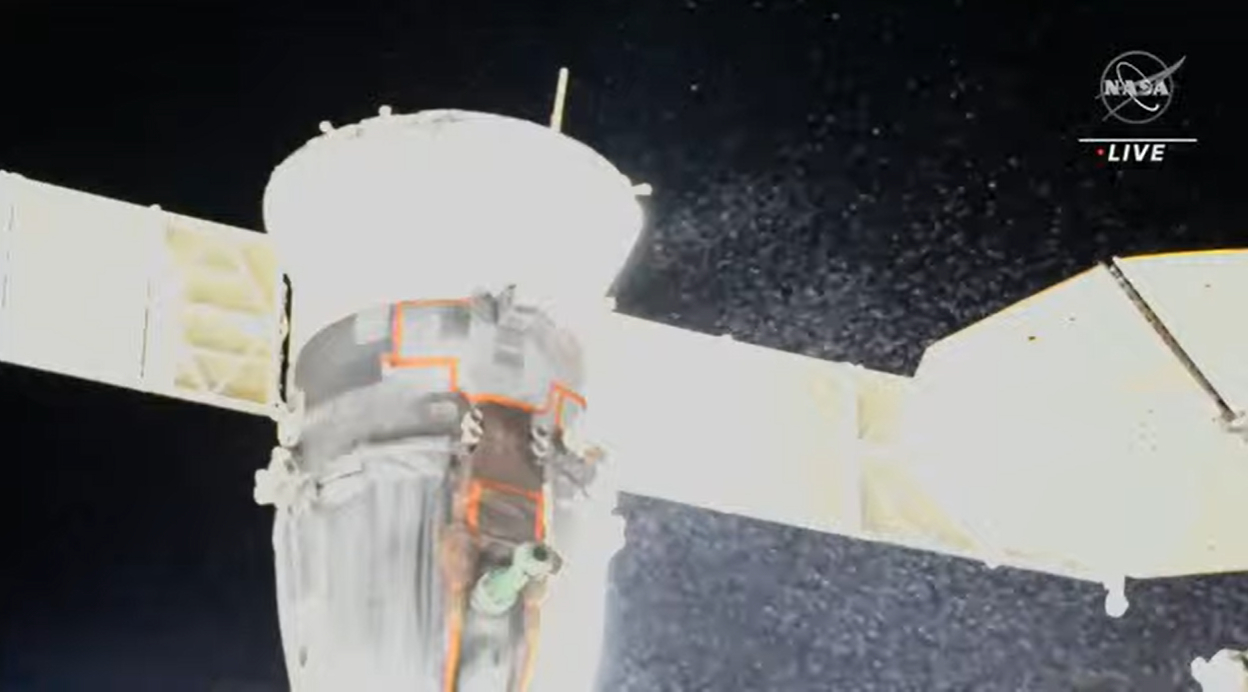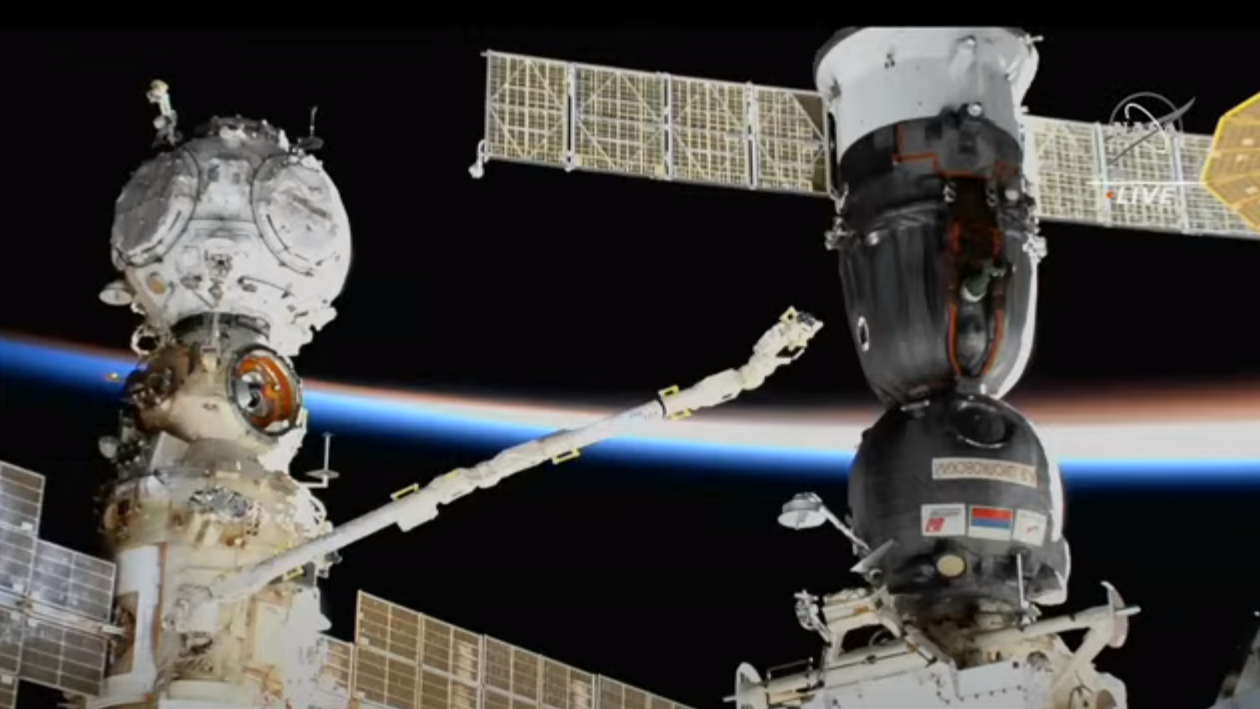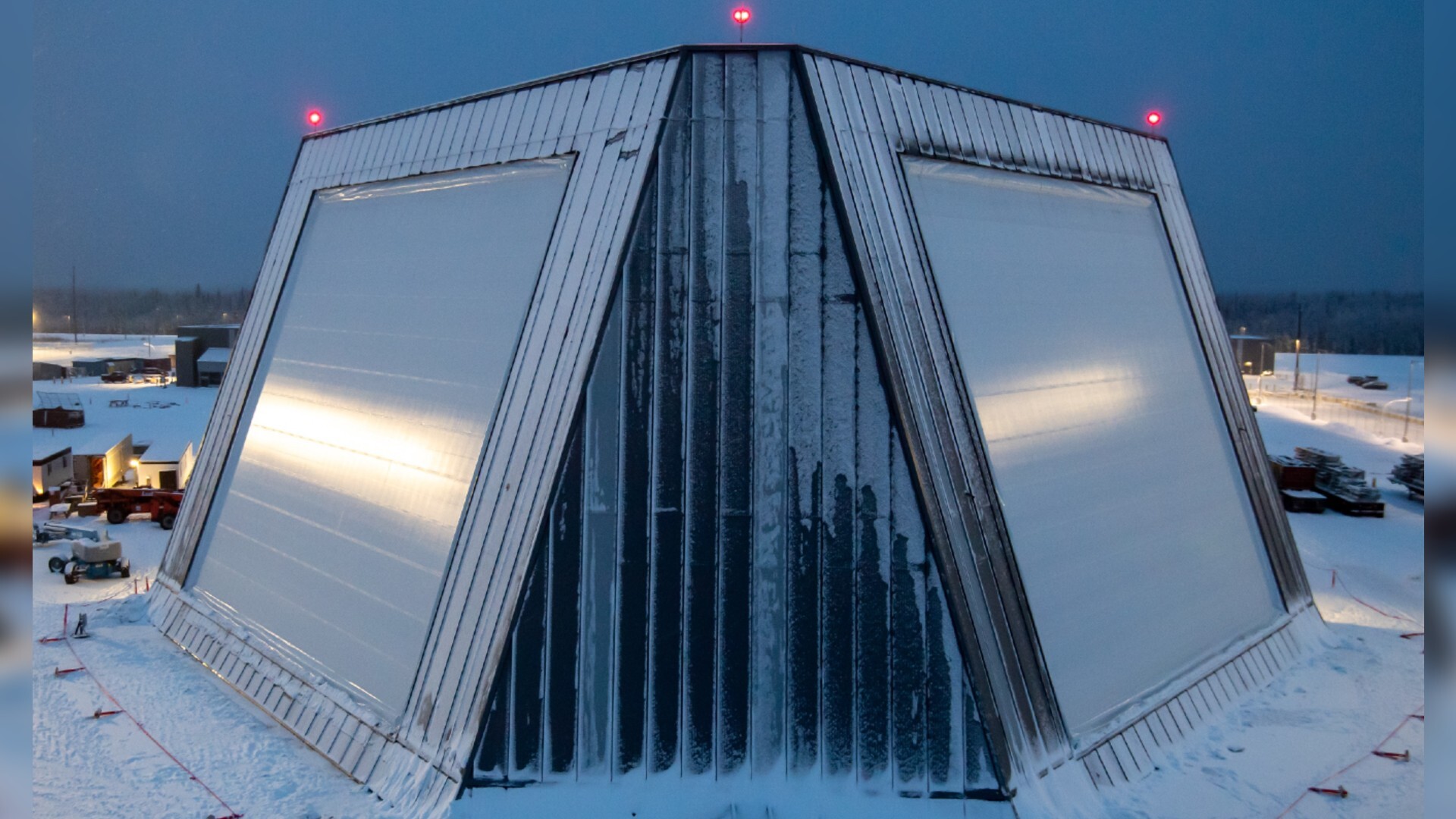Russia to launch new Soyuz capsule to replace leaky spacecraft on space station
"We're not calling it a rescue Soyuz," NASA says.

Russia's space agency will launch an empty Soyuz capsule to the International Space Station February to replace a damaged spacecraft that is unsafe to return its crew of three to Earth, NASA and Russian space officials said Wednesday (Jan. 11).
The new MS-23 Soyuz spacecraft will launch on Feb. 20 from Baikonur Cosmodrome in Kazakhstan to replace the stricken Soyuz MS-22 capsule on the station, which suffered a coolant leak on Dec. 14 after being struck by a likely micrometeoroid, NASA and Russia's Roscosmos agency said.
"We're not calling this a rescue Soyuz," Joel Montalbano, NASA's space station program manager, told reporters Wednesday. "I'm calling it a replacement Soyuz. This is the next Soyuz that was scheduled to fly in March. It will just fly a little early."
The replacement Soyuz spacecraft will serve as the new lifeboat and return craft for NASA astronaut Frank Rubio and Roscosmos cosmonauts Sergey Prokopyev and Dmitry Petelin, who have been living on the International Space Station without a return ship since their MS-22 Soyuz was damaged last month. It's an unprecedented scenario, officials have said.
Related: Hole in leaky Soyuz spacecraft not caused by Geminid meteor
The coolant leak on Dec. 14, which was captured in dramatic video by station cameras, meant the Soyuz MS-22 is unable to keep its crew capsule and systems cool enough for safe operation. That left its crew without a lifeboat in case of an emergency, since the currently docked SpaceX Dragon capsule was designed to hold only its four Crew-5 mission astronauts, not seven people.
"The main problem to land with the current Soyuz would be thermal conditions," Sergei Krikalev, a veteran Russian cosmonaut and Roscosmos' executive director for human spaceflight systems, said during the news conference. "Because we lost heat rejection capability on Soyuz, in case we have crew inside and we have all equipment switched on, we may have a high-temperature situation on Soyuz in the equipment compartment and crew compartment."
Breaking space news, the latest updates on rocket launches, skywatching events and more!
The temperatures inside the Soyuz could reach up to 104 degrees Fahrenheit (40 degrees Celsius) during a return trip to Earth, Montalbano said. Krikalev added that humidity levels would also soar in the confined space of the capsule. A Soyuz return trip to Earth takes at least six hours and can take longer.
"The temperatures in those areas would not be healthy for the crew," Montalbano added.
Rubio and his crewmates will now return to Earth aboard the Soyuz MS-23, but exactly when is not yet known. Their mission will be extended by months because their Soyuz MS-23 was originally slated to deliver a new crew to the station in March. That crew will now have to wait for yet another new Soyuz, MS-24, to be completed.
Krikalev said that the delayed return will add at least several more months to the crew's original six-month mission, which launched in September 2022, and that they could face the potential of a nearly yearlong flight while awaiting their relief crew's launch.
"The awesome thing about our crews is they're willing to help wherever we ask." Montalbano said. "They're prepared to stay until the September launch date if that's the case. If they go earlier, and that launch date moves up earlier, then they're prepared to come home earlier.
"I may have to fly some more ice cream to reward them," Montalbano added.
Meanwhile, NASA is weighing potential delays to its Crew-6 astronaut launch on a SpaceX Dragon capsule and Falcon 9 rocket, currently targeting Feb. 16. A ripple effect is likely as NASA and Russia rearrange launch schedules.
Montalbano said NASA and SpaceX have been working on contingency plans in case the stranded Soyuz MS-22 crew needs to return to Earth before their new Soyuz MS-23 ship arrives. Those plans currently call for securing the Soyuz crew inside the cargo area of the Crew-5 Dragon capsule, but talks are still ongoing, he added.
While the stricken Soyuz MS-22 capsule is unfit to carry a human crew, it will still be guided to a nominal landing on the steppes of Kazakhstan, Krikalev said. That landing will occur several weeks after the replacement Soyuz MS-23 arrives at the station, since Rubio, Prokopyev and Petelin must transfer their custom seat liners, Sokol entry suits and other gear to the new ship.
Krikalev said Roscosmos will load up the departing Soyuz MS-22 craft with gear and science experiment results that won't be harmed by higher temperatures during the trip to Earth. And the new Soyuz MS-23 spacecraft will be loaded with extra cargo in place of a human crew when it launches, he added.
Montalbano said station engineers will also take close measurements of the temperatures inside the uncrewed Soyuz MS-22 when it returns to Earth to understand what the heating environment is like on such a damaged spacecraft.
"So we're going to fully use this vehicle all the way to until it lands back on Earth," Montalbano said.
Email Tariq Malik at tmalik@space.com or follow him @tariqjmalik. Follow us @Spacedotcom, Facebook and Instagram.

Tariq is the award-winning Editor-in-Chief of Space.com and joined the team in 2001. He covers human spaceflight, as well as skywatching and entertainment. He became Space.com's Editor-in-Chief in 2019. Before joining Space.com, Tariq was a staff reporter for The Los Angeles Times covering education and city beats in La Habra, Fullerton and Huntington Beach. He's a recipient of the 2022 Harry Kolcum Award for excellence in space reporting and the 2025 Space Pioneer Award from the National Space Society. He is an Eagle Scout and Space Camp alum with journalism degrees from the USC and NYU. You can find Tariq at Space.com and as the co-host to the This Week In Space podcast on the TWiT network. To see his latest project, you can follow Tariq on Twitter @tariqjmalik.

